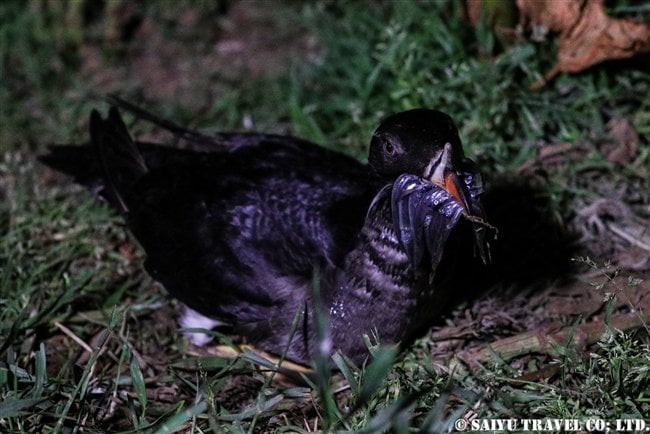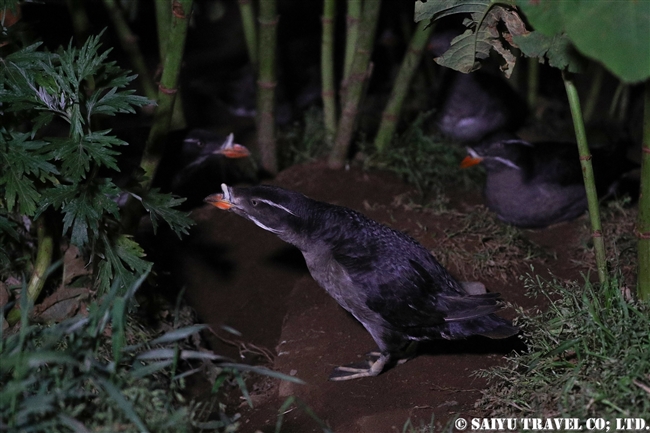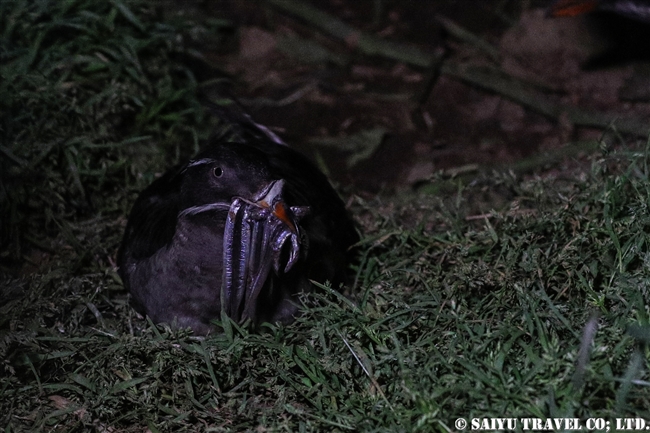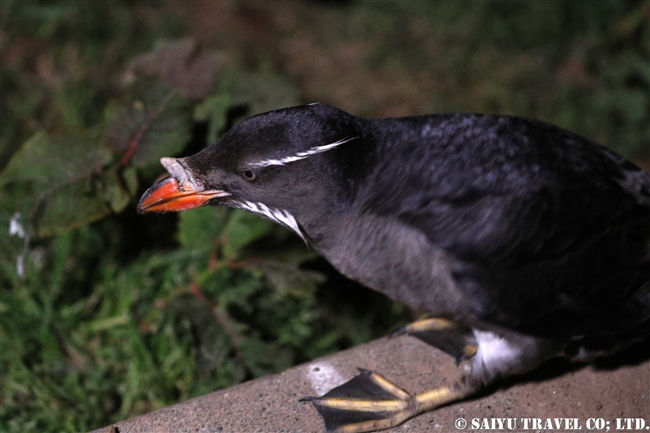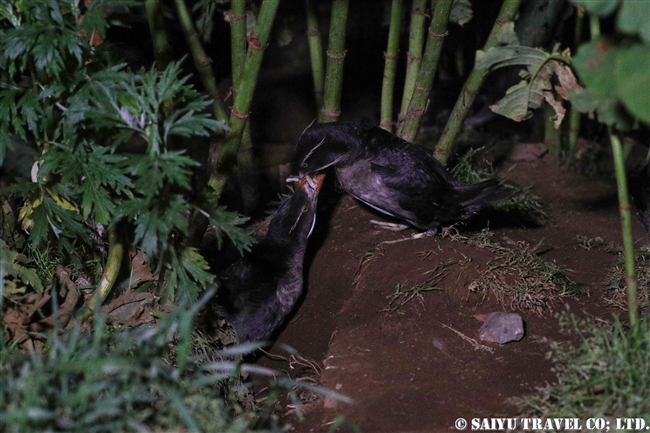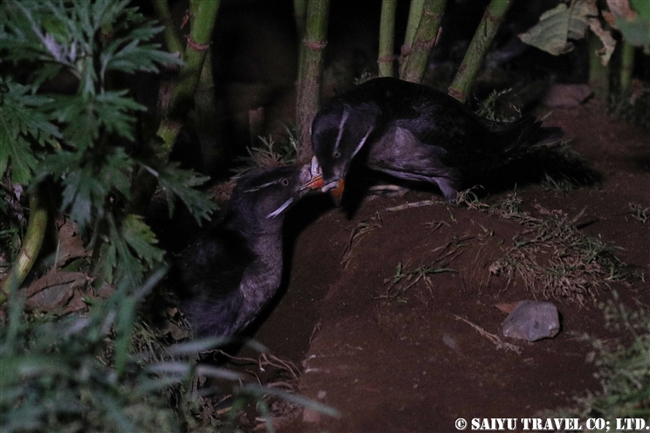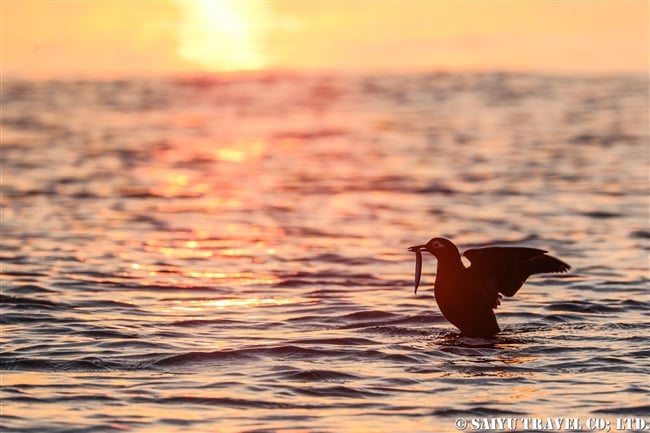
>For information and tours of Teuri Island, click here!
No where else in the world can you see these rare seabirds nesting, as close as you can on Terui Island, the island of the Spectacled Guillemot and Rhinoceros Auklet. To get there, one needs to take a ferry from Haboro, Hokkaido for about 1hour and 30 minutes, in the remote reaches of the Sea of Okhotsk. The birds will arrive at the island from April to July, but it is a bit easier on the traveler to come when the sea conditions are calmer, around June. By this time, breeding has passed its peak and you can observe the seabirds hastily raising their chicks.
On the day we arrived on Terui Island, Mr. Takaki Terasawa, a nature photographer living on the Island, told us “Today’s sunset has a lot of potential” so we headed back out to sea in his boat, ‘Keimafuri Gou’ (literally translated to the ‘Spectacled guillemot ship’).
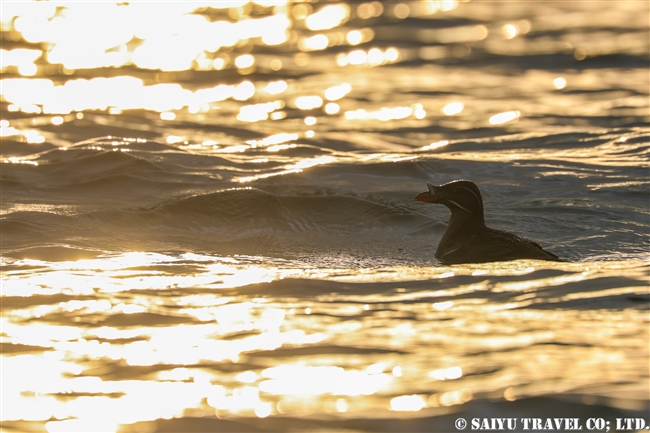
By June, you can see the seabirds diligently carrying a beak full of fish back to their chicks in the nest. Right off the bat, we saw a rhinoceros auklet.
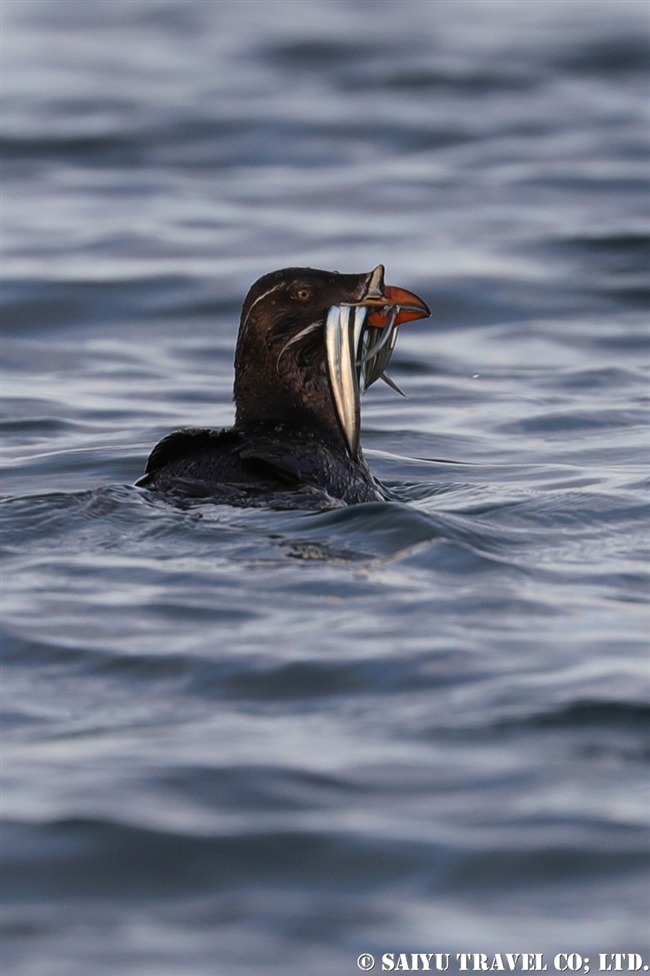
Once the sunsets, it is time to head back to the nest. We could see this figure appear, an auklet with a bunch of fish in its beak. As its namesake implies, the mature Auklet has a growth that resembles a rhinoceros horn, which protrudes from the base of the upper beak.
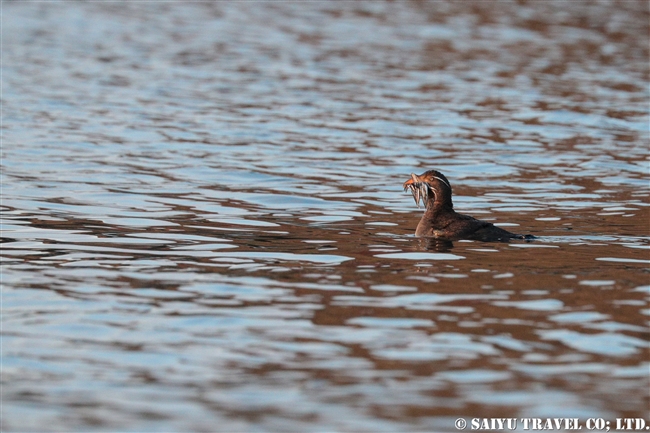
This rhinoceros auklet has many fish to take back to the chicks waiting at its nest.
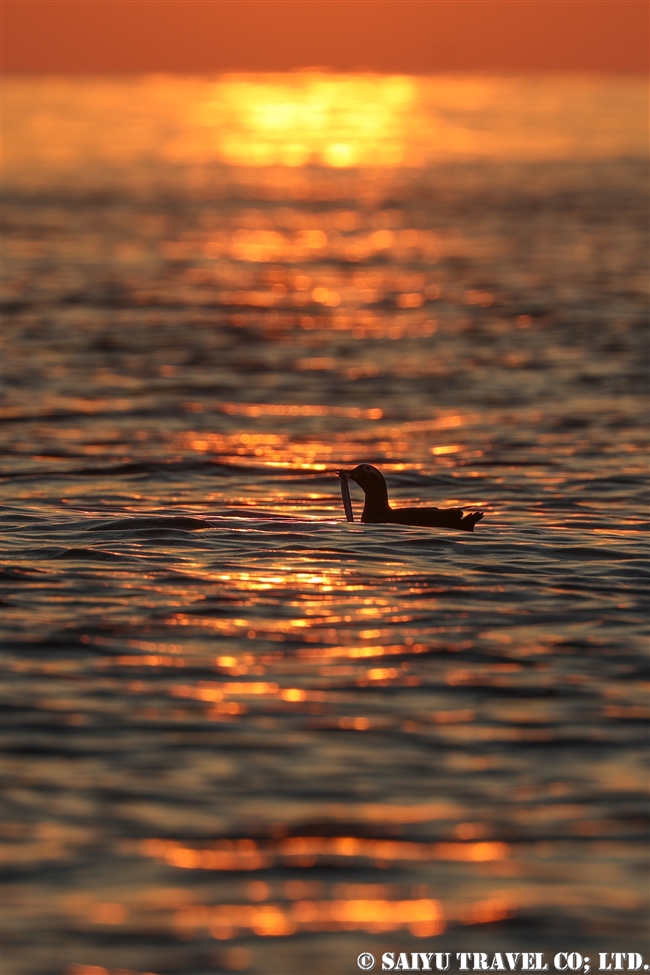
This is a guillemot that is carrying some fish in its beak. Probably it has caught the Pacific sandlance? The common name in Japanese for the guillemot translates to “Red legs” derived from the Ainu name “Keima hure” because of its noticeable bright red legs. The English name is based on the smart pair of glasses the birds wear, Spectacled guillemot, due to the white patterns around its eyes. Either way, however, it is hard to understand these descriptive names in this back lit scene.
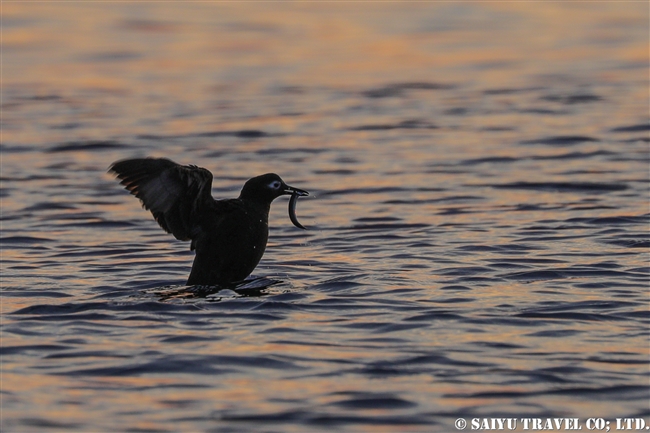
As the sun sets low and the sky grows dark, it is about the time that one starts to worry about whether the shutter speed on the camera can capture the images we want. More and more guillemots are arriving with fish in their beaks.
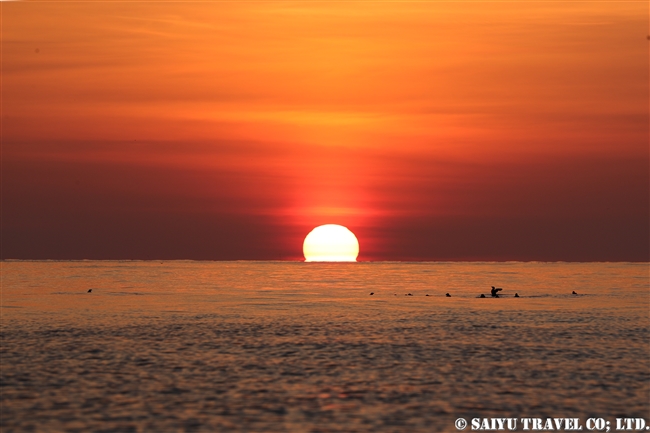
The setting sun in the sea off Terui Island.
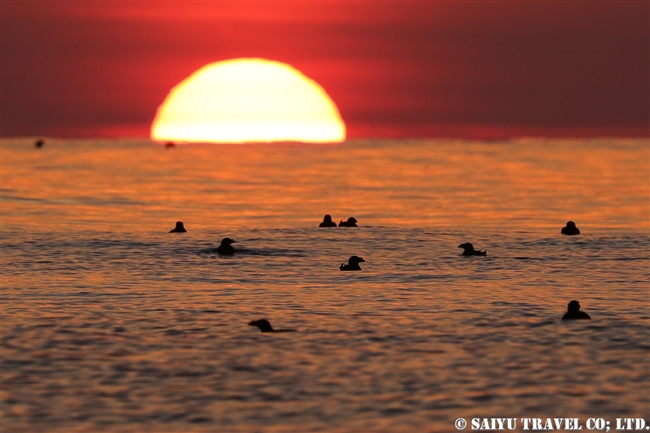
The striking scene of the setting sun silhouetting the rhinoceros auklets. I have such a deep appreciation to be able to see this amazing site! Thank you!
Photo & Text: Mariko SAWADA
Observation: Jun 2018, Teuri Island, Hokkaido
★ Visit our web site of TEURI ISLAND.
★Contact us to make arrangements for photographing seabirds on Teuri Island and Wildlife of Japan.
★Wildlife videos are also available on Youtube – we have the playlist as well.
Tags: Wildlife of Japan, Spectacled Guillemot, Utou, Birds of Japan, Birding tour Japan, Wildlife Photography tour in Japan, Bird tour Japan, Wildlife tour in Japan, Bird Watching Japan, Birds Photography of Japan, Wildlife in Japan, Wildlife in Hokkaido, Teuri Island, Teuri, Rhinoceros Auklet, 天売島, Akaiwa Observatory, ケイマフリ, ウトウ, Keimafuri





